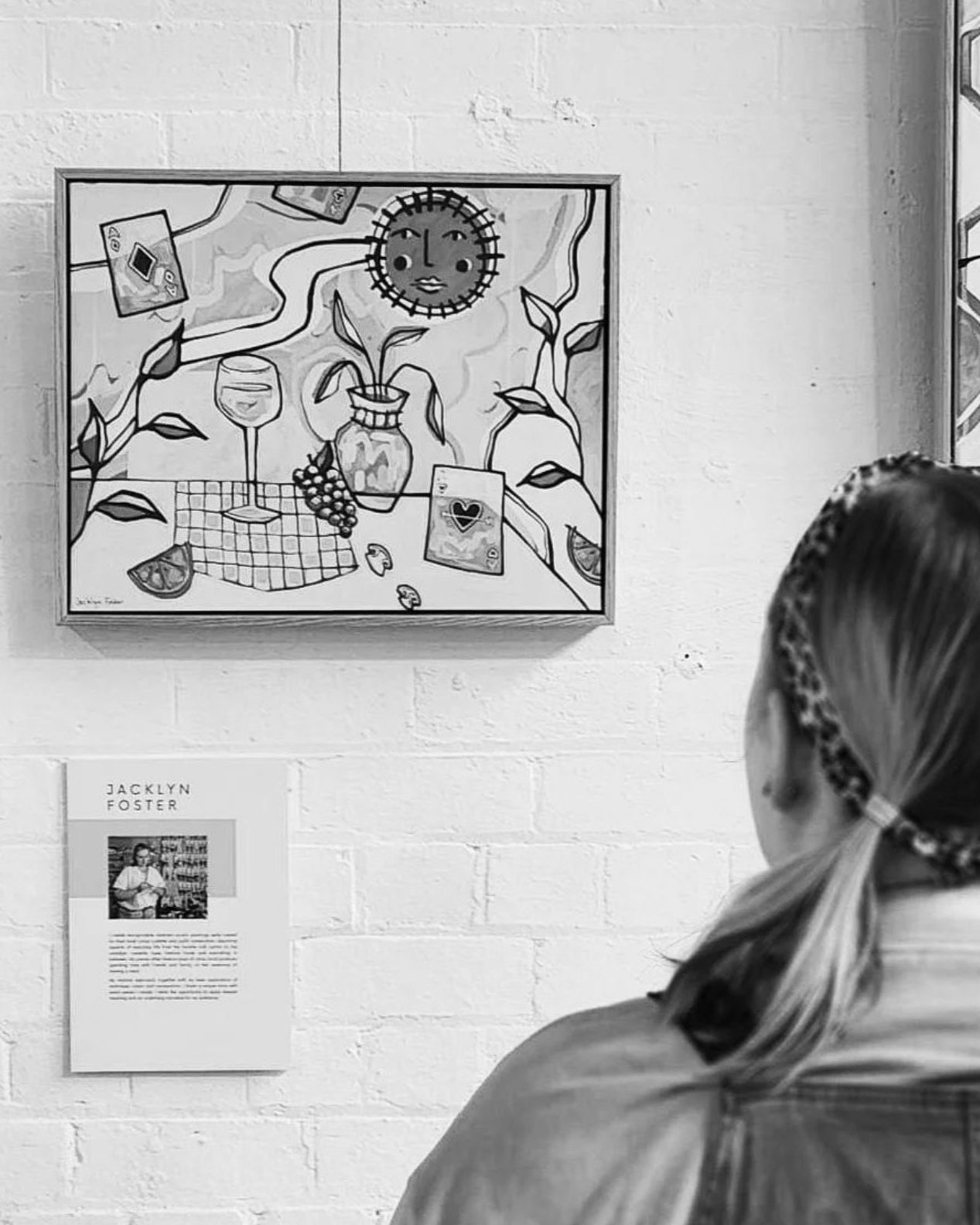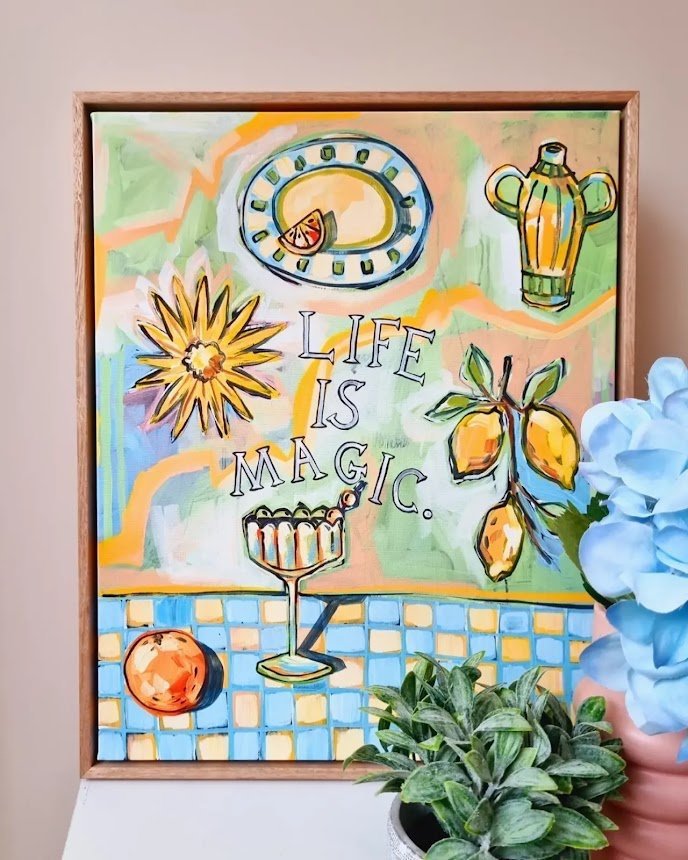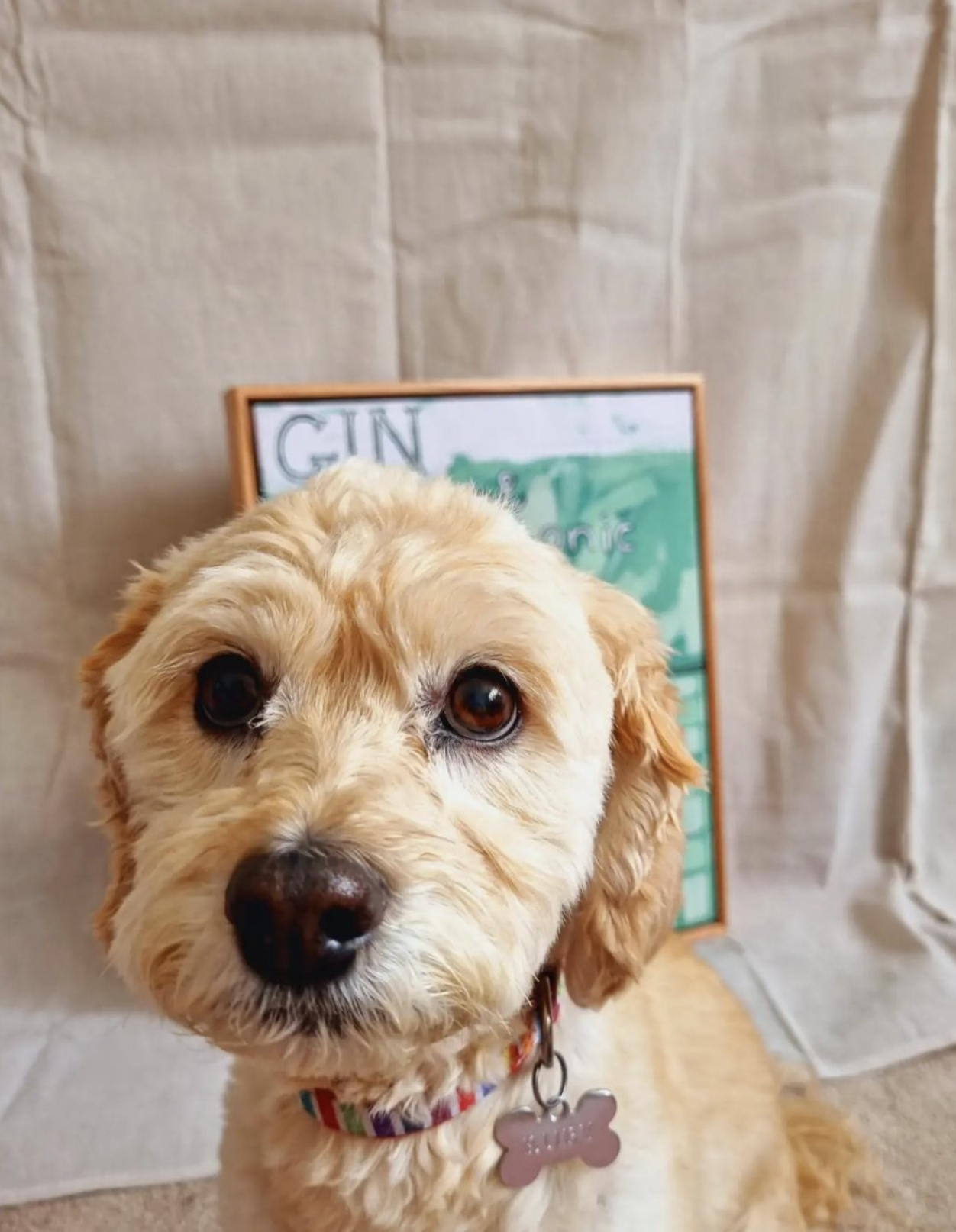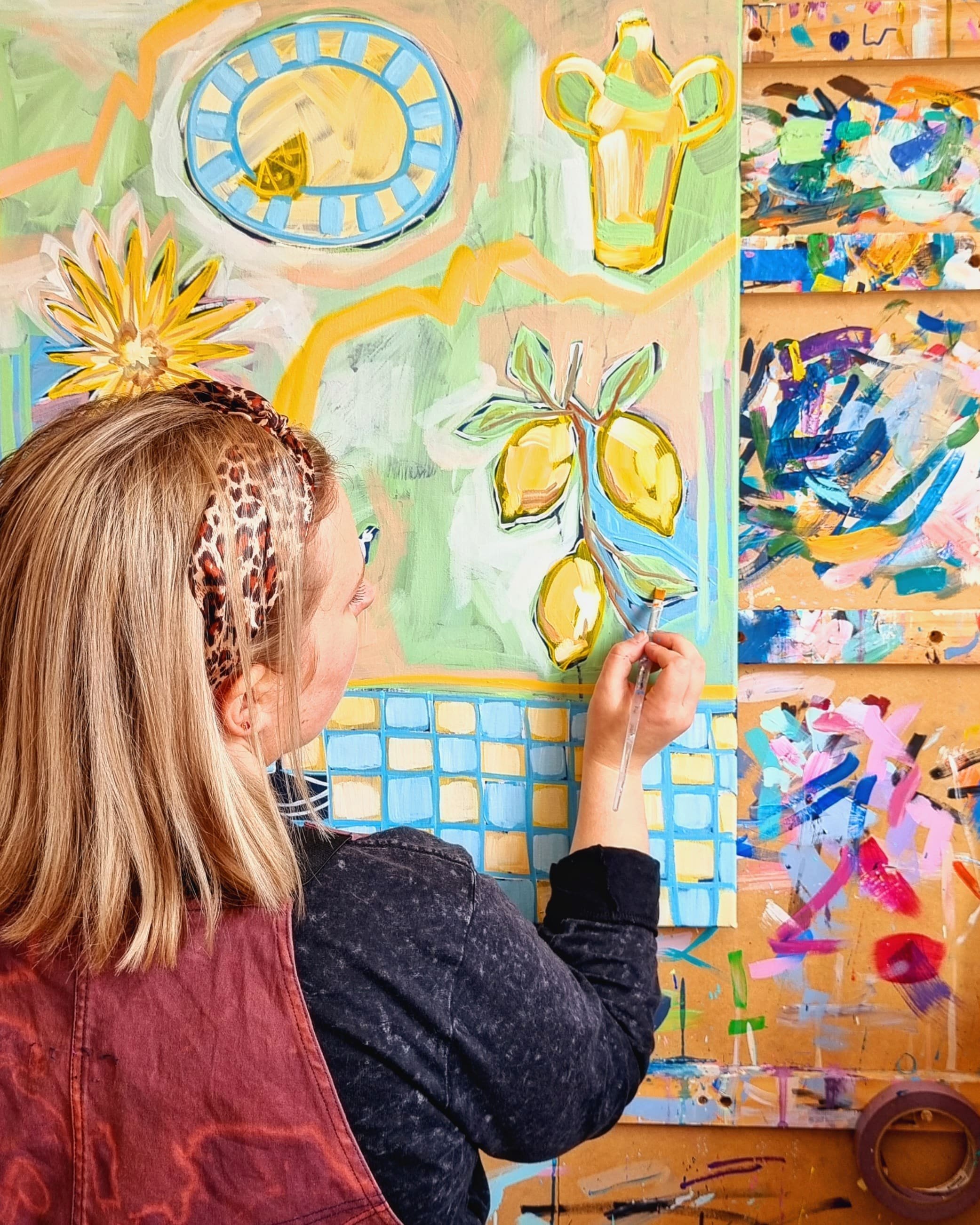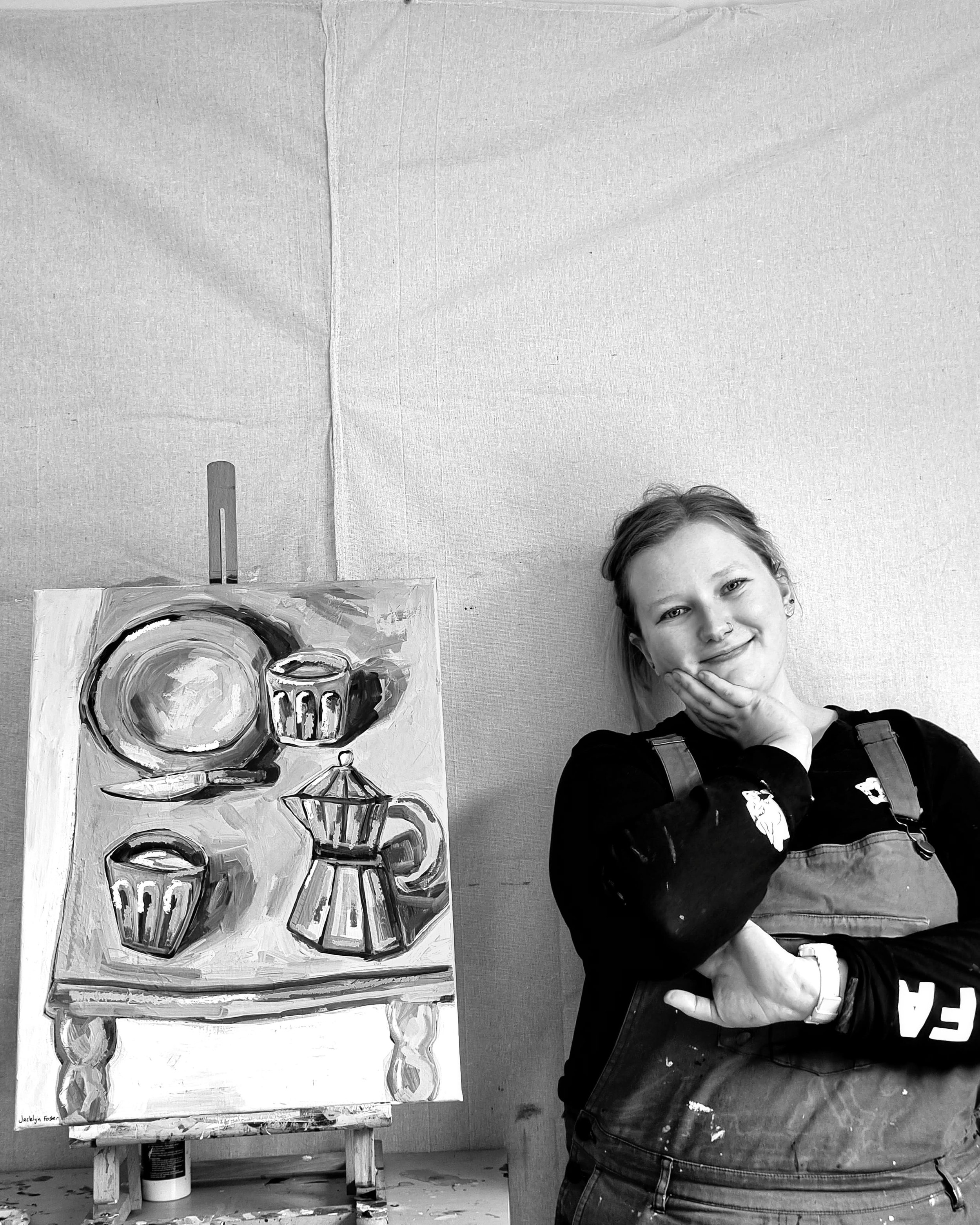Becoming a full-time artist: Jacklyn Foster
Many creatives talk about the courage it takes for them to eventually introduce and call themselves ‘an artist’ – let alone take the leap into becoming a full-time artist. So what does it take and what does it look like once you’re there? We sat down with the award-winning, Geelong-based artist Jacklyn Foster to find out.
How did you know you were ready to take the plunge and become a full-time artist? It was in the middle of the pandemic *good timing, I know* but I had only been working six hours a week at my council job – financially, art was making up the majority of income. We went on break over Christmas and I made the decision then that I would step back from my job and give it a go full-time. That was the start of 2021 and I haven't looked back.
What have you learned along the way? Don't be afraid to give something new a try, and that there is always a lesson to be learned if something doesn't work. You try, try and try again. And that each and every painting, every exhibition you enter, competition you're a part of, each time you share your work on social media, it's a brick in the wall of your entire art career. Don't put so much pressure on yourself, and put weight behind each thing you do. It's all a drop in the bucket... I'm laying it on thick with the metaphors, but I think you get it.
“Don’t be afraid to give something new a try, and that there is always a lesson to be learned if something doesn’t work.”
What do other makers need to know before they decide to go full-time? What are the most important things to have in place? Make sure you have a financial buffer to fall back on, or a consistent stream of income from art before you take the leap. Ask yourself how much you’re consistently ALREADY making with your art; could you live off that, or how much extra do you need to bring in per week to survive? Having that financial knowledge of your business is a fundamental thing to have in place when you decide to go full-time.
Studio assistant, Ruby.
What does the typical day look like for you as a full-time artist? I start my day early, I am an early bird – early to bed at night haha! Always coffee and usually an episode of my favourite show – I like to ease my way into the day. I am typically in the studio or at my desk by 8am. I’ll often squeeze in appointments, or life admin, in my lunch breaks. A tip for people who work from home: give yourself a lunch break, it can be easy to work through. I paint in the mornings as that is my most productive, inspired, motivated part of my day, and I will often leave the admin side of the job for the second half of the day. Besides this, I am often out and about at the printer and framers, buying new materials, visiting art galleries and getting coffee. I then finish off the day by walking Ruby (my beautiful dog), or going to the gym, or having a nap if it’s been a big day haha.
What’s been the most challenging part of going full-time? One of the most challenging parts has been the lack of social connection; working for yourself in the beginning can be really lonely and isolating and something I wasn’t prepared for. It is a bizarre concept to get used to, that there is no more ‘water cooler chat’ – it is often just me and Ruby. There is no one waiting for you in an office, or workplace at 9am.
Read more: Jacklyn Foster’s art journey: Throwing spaghetti at a wall
What’s been the most exciting part? Highlights have included working with the RSPCA, painting a sculpture of a wombat as part of their “Wombat in the Room” exhibition – the wombat now lives at Mildura Arts Centre. And the other highlight was my first gallery solo exhibition at the Mildura Arts Centre. I grew up in Mildura and a lot of people I grew up with or went to school with came, as well as my amazing art teachers from high school. It was a really wholesome moment.
“A tip for people who work from home: give yourself a lunch break.”
What’s your advice to others considering making art a full-time gig? Make sure you enjoy your own company – that you are okay with spending long periods of time by yourself. As well as being okay with a fluctuating income, these are the realities of when your art is your full-time. And lastly, take it seriously – if it’s your job, treat it like one. If there is something you would like to try, or be a part of, it is up to you to make it happen, or at least give it a go.
What tools have made it easy for you to do what you do? The paint board I made to store my tubes of paint on, otherwise I have paint tubes all over my work bench and can’t spot the paint I want. Having the easel set at standing height – I find it best to paint standing up, then I can stand back and get the whole picture of the artwork, instead of getting lost in the details without taking into consideration the entire artwork. Also, keeping a spreadsheet for your finances, or using a program like Xero has been an absolute game-changer. It lets me know how much I have been spending on art supplies, and how much I have been making, which is incredibly important when it is your full-time job.
Anything else we should know? Thank you so much for including me in this wonderful resource for creatives, keep up the brilliant work you do, and to the artists out there – keep creating. The world is a better place for having your art in it.
Geelong, Australia

